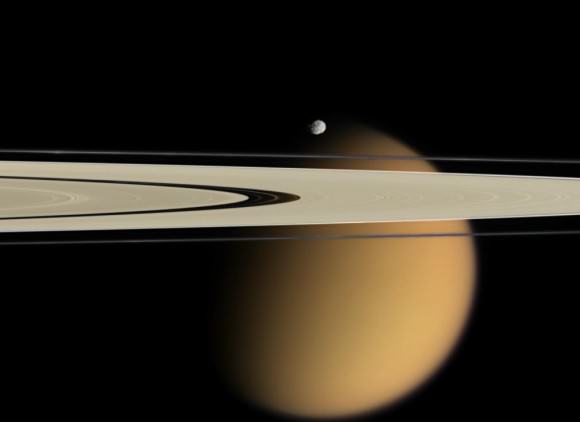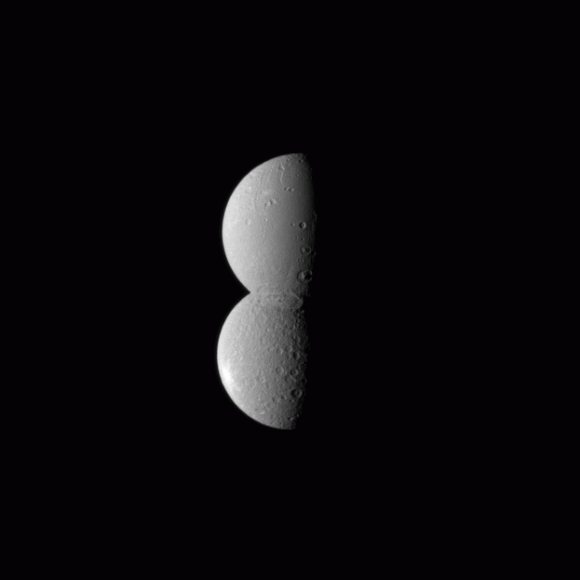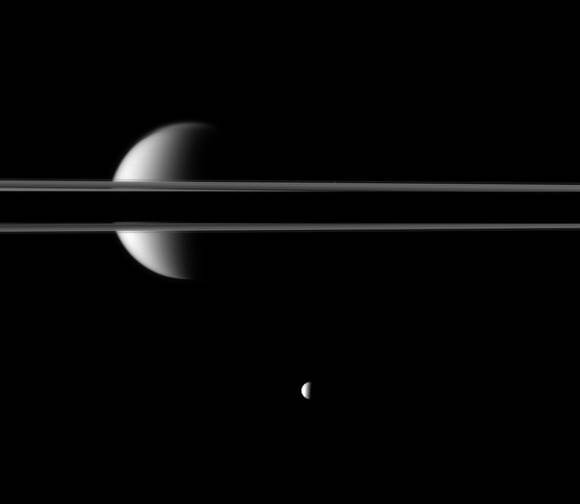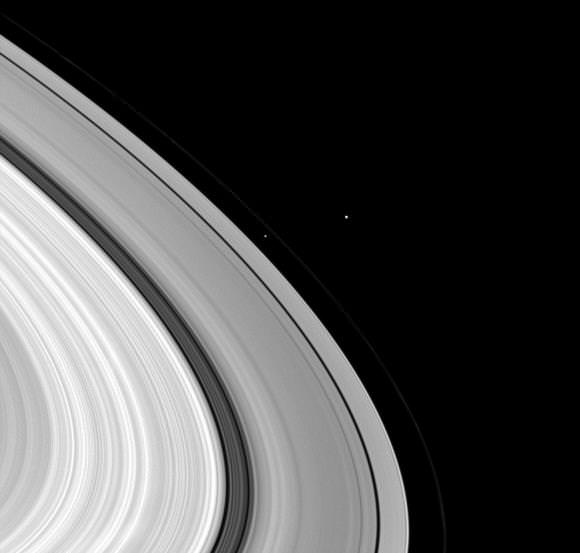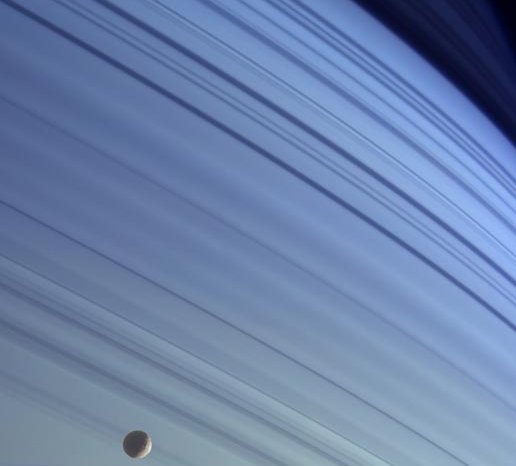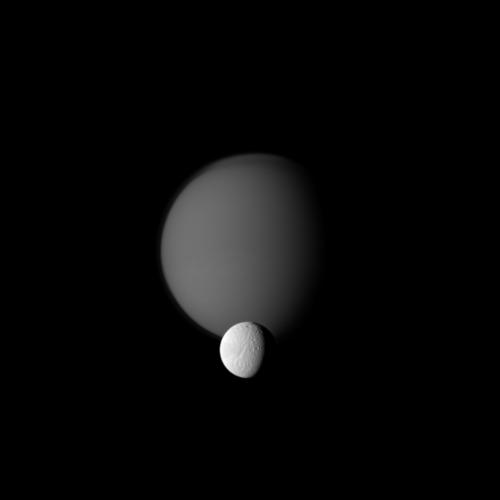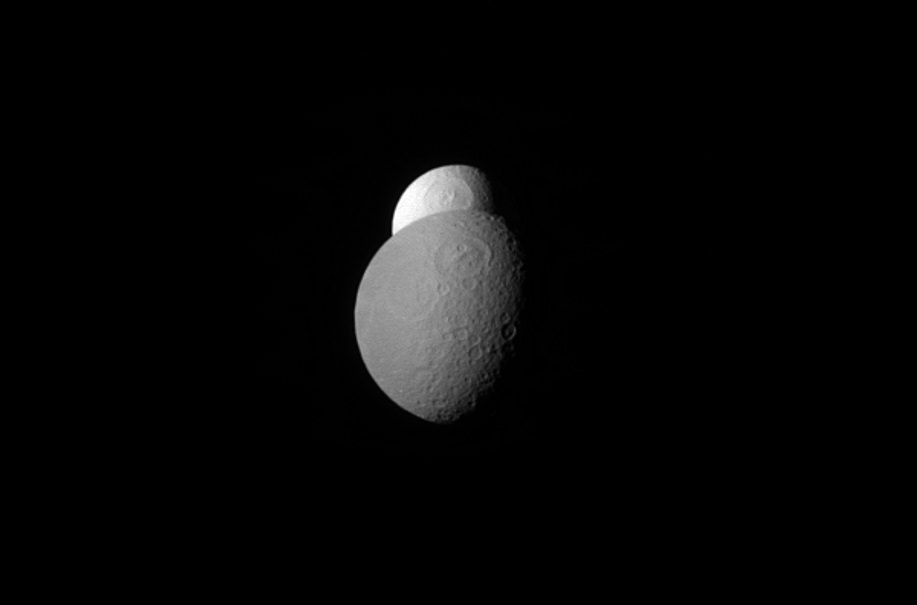Peekaboo! Tethys makes a (mostly in vain) attempt to hide behind Rhea in this picture taken by the Cassini spacecraft a couple of years ago, but highlighted by NASA in a recent picture essay. Besides the neat view of the orbital dance, one thing that is clearly visible between the two moons is the different colors — a product of their different surfaces. It turns out that Tethys’ bright surface is due to geysers from another moon.
“Scientists believe that Tethys’ surprisingly high albedo is due to the water ice jets emerging from its neighbor, Enceladus,” NASA stated. “The fresh water ice becomes the E ring [of Saturn] and can eventually arrive at Tethys, giving it a fresh surface layer of clean ice.”
Saturn has an astounding number of moons — 62 moons discovered so far, and 53 of them named, if you don’t count the spectacular ring that surrounds the planet. The collection of celestial bodies includes Titan, the second-biggest moon in the Solar System. It’s so big that it includes a thick atmosphere. (Ganymede, around Jupiter, is the biggest.)
Below are some other pictures of moons dancing around Saturn — some harder to spot than others. All images were taken by the Cassini spacecraft since it arrived at the planet in 2004.
